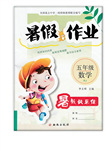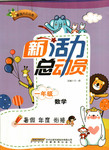题目内容
My daughter and I collected the empty cans and bottles in our home .this morning, We had 6 full garbage bags later so I knew we would be spending a bit more of time at the recycling center. When we got there , a man and his kids were also doing the morning recycling and were using two of the four machines to recycle their plastic and cans. Luckily ,we were able to use the 2 remaining machines.
Of course, there were others that came, but when they saw the two families with garbage bags full of recycled things, they quickly left. However, one woman came in with just 5 cans and looked as if she was in a hurry. So I stopped what I was doing and let her in to recycle her cans. Of course, she was grateful, and it felt good to let her go ahead of me. But that was not the whole story.
My daughter and I continued to work through the bags, but the plastic recycling machine stopped working because it was full. My daughter was left with nothing to, do. The other family was still using the other two plastic recycling machines, but it. seemed that they were almost done .I just told my daughter we would have to wait until they were done. But the man of the other family came through with another act of kindness. He offered to let us go ahead of him. I was really surprised, because we had more than 5 bottles, but he didn’t seem to mind. I happily accepted it.
It was great to give and then to get an act of kindness in turn. It was small, I didn't expect it, but it surely brightened up my day.
1.What can we learn from Paragraph l?
A. The writer did collecting every morning.
B. The writer usually had 6 bags of cans to recycle.
C. There were four recycling machines in all.
D. Most people did recycling in the morning.
2.Why did the writer let the woman recycle her cans first?
A. Because there were many other families there.
B. Because the woman seemed to be in a hurry.
C. Because the writer wanted to hear a story.
D. Because the woman was very grateful.
3.Why couldn't the writer finish her recycling in time?
A. Because her daughter' s machine stopped working.
B. Because the other family was still using the machines.
C. Because she let the other family use her machine first.
D. Because she helped recycle the other family's bags first.
4.What does the underlined word "it" in Paragraph 3 refer to?
A. The kindness. B. The offer.
C. The machine. D. The 5 bottles.
5.Which of the following best describes the topic of this passage?
A. A good name is sooner-lost than won.
B. A little is better than none.
C. All men cannot be first.
D. One good turn deserves another.
1.C
2.B
3.A
4.B
5.D
【解析】
试题分析:这篇文章讲的是作者和女儿在废品回收站帮助一个妇女,然后在自己需要帮助的时候,又得到别人的帮助,说明一个善举反过来值得另外一个善举。
1.细节题:从第一段的句子:a man and his kids were also doing the morning recycling and were using two of the four machines to recycle their plastic and cans.可知总共有4个回收机,选C
2.细节题:从第二段的句子:However, one woman came in with just 5 cans and looked as if she was in a hurry. So I stopped what I was doing and let her in to recycle her cans.可知作者让这个妇女先用这个回收机,因为她看起来很忙,选B
3.细节题:从第三段的句子:My daughter and I continued to work through the bags, but the plastic recycling machine stopped working because it was full. My daughter was left with nothing to, do.可知作者女儿的机器出故障了,所以她们没能及时完成回收,选A
4.指代题:从第三段的句子; He offered to let us go ahead of him. I was really surprised, because we had more than 5 bottles, but he didn’t seem to mind.可知这个男子主动提出让作者她们先用回收,所以这里的it指的是“这个提议”选B
5.主旨题:从文章的内容和第四段的句子:It was great to give and then to get an act of kindness in turn. It was small, I didn't expect it, but it surely brightened up my day.可知这篇文章讲的是一个善举反过来会变成另外一个,选D
考点:考查故事类短文

 暑假作业暑假快乐练西安出版社系列答案
暑假作业暑假快乐练西安出版社系列答案 新活力总动员暑系列答案
新活力总动员暑系列答案 龙人图书快乐假期暑假作业郑州大学出版社系列答案
龙人图书快乐假期暑假作业郑州大学出版社系列答案